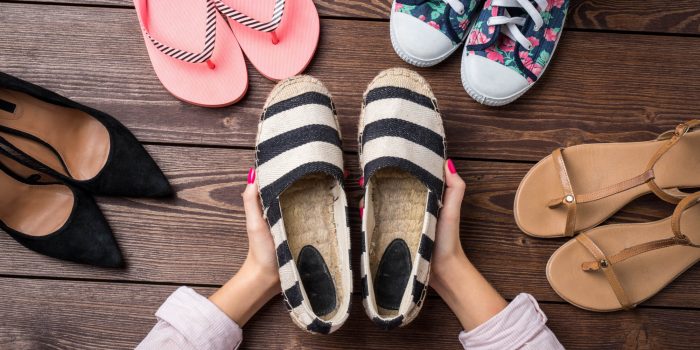How to Measure Shoe Size and Width: The Complete Guide
Are you wondering how to measure shoe size and width for that perfect fit? In this article, explore a complete guide on this question and more.
Did you know that the right shoe wasn’t invented until 1818?! Before then, shoes were the same for the right and left foot. Read on to learn what size shoe you should be wearing, so that your options are limitless from online to in-store!
Before You Begin:
Before beginning, it’s a good idea to measure your feet after walking for a whole day since this can increase the size of your feet. If you decide to round up or down, this can affect the proper measurement of your feet.
Since most feet aren’t the same size, it’s a good rule of thumb to buy matching the larger foot. Measure your feet barefoot if you won’t be wearing socks or tights with the perfect shoe.
Measuring Your Foot:
First, to measure your foot, you’ll want to place it on a white piece of paper. Make sure that you sit down on a chair with your back straight. The paper should be big enough to fit your entire foot.
If you plan on wearing socks with the shoes, place your socks on before measuring. Next, trace around your foot with a pencil or pen.
While doing so, stay close to your foot. Another option is to use a measuring tape and measure the width and length of your foot.
Marking the Length:
Use a pen or pencil to have straight lines touching the bottom, top, and sides of the outline. Use a measuring tape or ruler to measure the length from the bottom to the top that you just drew. Once you have this measurement, you’ll want to write it down.
Measuring Your Foot’s Width:
You might be wondering how to measure your foot width. Some people might need a wide or narrow shoe option. First, take the width of your foot with a ruler or measuring tape.
Use the line from one side, to the line on the other. Write this number down once you’re done.
Finding Your Shoe Size:
Once you measure the length of your traced shoe size, you can then search online to find the shoe size that matches your measurements. You’ll want to follow the sizing charts you find since measurements can vary slightly from shoe size to shoe size.
Try Before You Buy:
Your safest option is to try them on before a purchase. It’s a good idea to try them a day after walking all day since your feet can increase after walking.
If your feet are wider or narrower, then the regular shoe size might not be the right fit for you. Buying online is an option as long as you find a company that allows you to return them if you don’t like the fit.
Measuring
Ask the person working at the store to measure your feet if you haven’t measured them yet. This will help you speed up the process to find the perfect shoe.
Keep in mind that different factors can impact the fit, such as pregnancy or weight gain. These changes can be permanent.
Walk It Out
Once you have the pair of shoes on with the appropriate socks/tights, walk around the store to see how they feel. While it might be tempting to choose an appealing pair of shoes, they have to be comfortable if you’re wearing them long-term.
Start at one end of the store, and walk to the other. Do they feel like they’re slipping at all while you walk? Do they feel like they’re squeezing your feet?
Compare Sizes
Each brand can vary as far as sizes go, and while you might normally wear a 6, one brand’s 7 might be like another’s 6. Don’t assume that the shoe will become more comfortable with time. Go with what feels comfortable from that first moment.
Sole Advice
Check out the sole of the shoe before buying it. Make sure that the sole of the shoe is thick enough since thinner options can lead to injuries if you step on a nail.
Notice if the sole is stitched instead of glued, that means it’s of a high-quality. If you’ll be working with these shoes on, especially in construction, choose a hard-soled shoe.
Replacing Workout Shoes:
If you’re an active person, you’ll find that you’re replacing your running shoes more often. First, think about how often you wear your shoes for exercise. Do you just use them for working out, or do you still wear them afterward?
Foot pain, heels breaking down, or a shoe that feels less supportive can be signs that you need to replace your shoes. Do you notice more pains than usual after a workout? This can actually be from your shoes.
To make them last longer, avoid placing them in the dryer. If you do wash them, use a gentle soap and cold water. Heat in a dryer can break down the glue, and cause damage.
Have multiple pairs of workout shoes that you can rotate. This is a great way to maintain hygiene as well.
Ensure that you use a disinfectant spray in your workout shoes too. This will help maintain proper hygiene.
Exploring How To Measure Shoe Size and Width:
Now that you’ve explored how to measure shoe size and width, you should have a better idea of your shoe size. Would you like to read more fashion advice? For everything from beauty to fashion, check out our other articles today.
Read Also:








